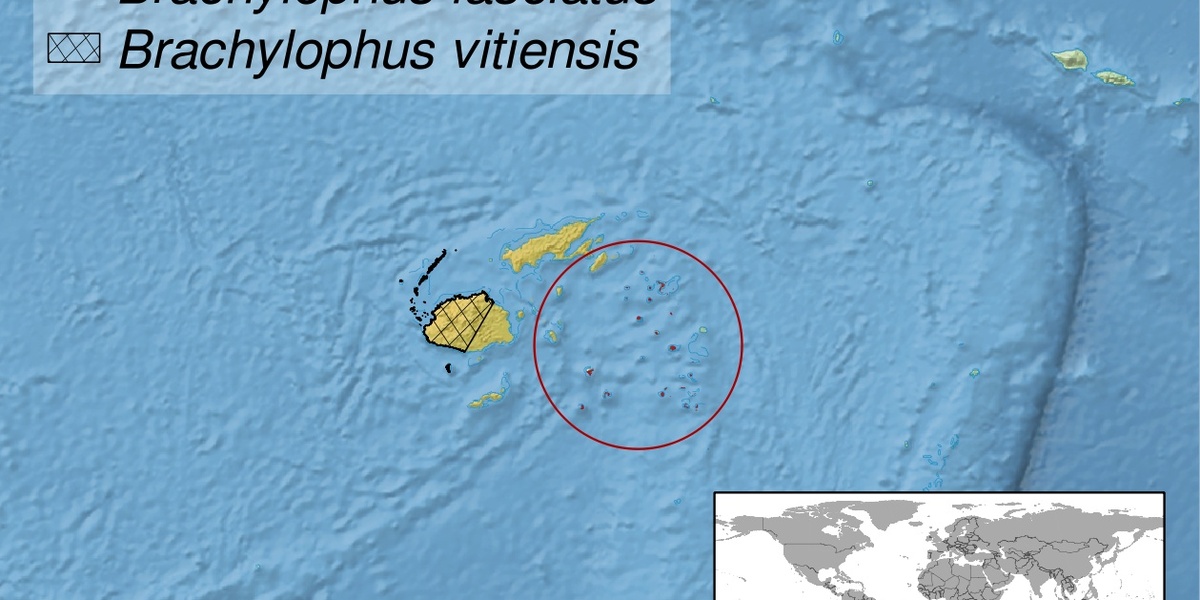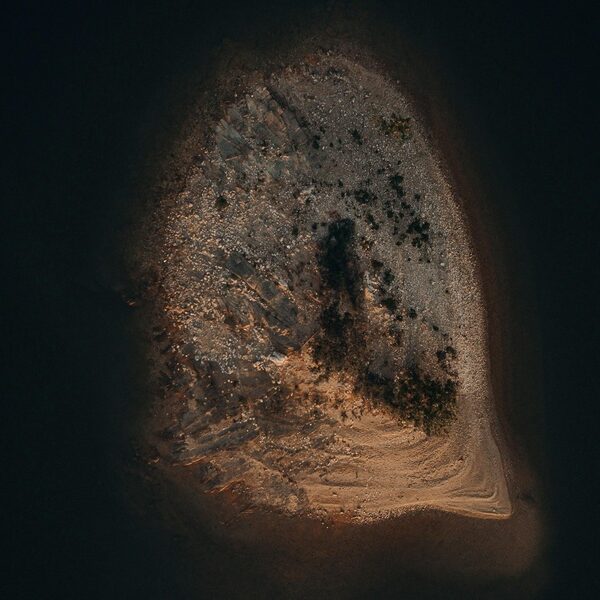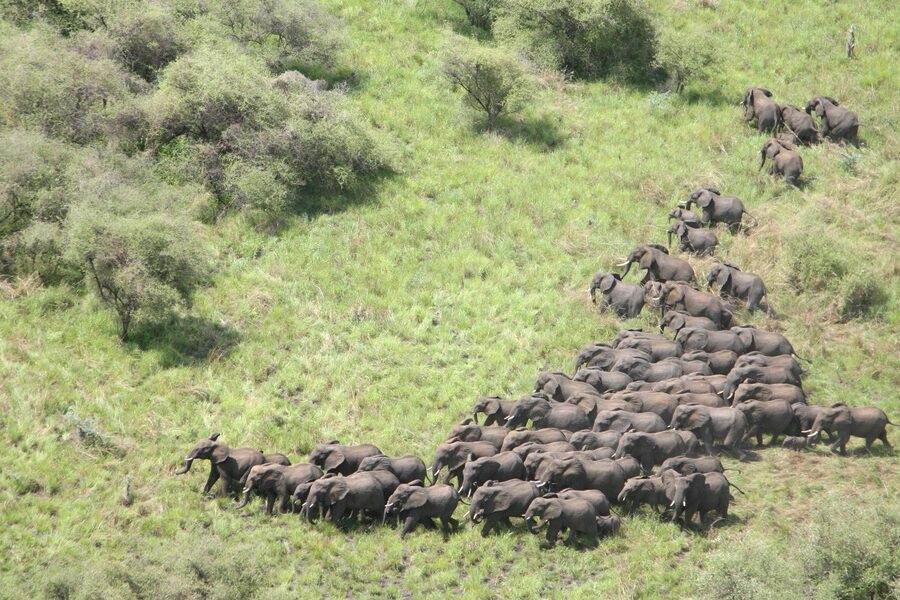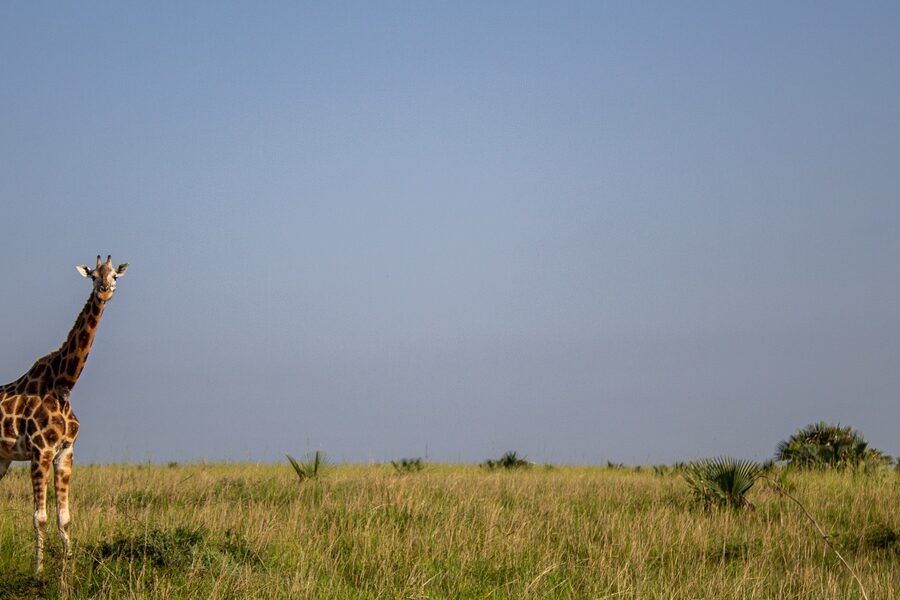Fiji’s islands hold more than sun and surf — their reefs, forests and deep waters shelter species found nowhere else or rarely seen. From cloud-forests on larger islands to offshore pelagic zones, the archipelago’s varied habitats shape a small but unusual fauna that draws scientists and curious travelers alike.
There are 22 Rare Animals in Fiji, ranging from Bolo to Sperm Whale. For each species the list gives Scientific name, IUCN status, Range & habitat — you’ll find below.
How can I observe these rare animals responsibly while visiting Fiji?
Look for guided, low-impact tours run by local operators and stick to marked trails and marine zones; guides know seasonal patterns (nesting, breeding, feeding) and proper viewing distances. Use binoculars, avoid flash photography, and report any injured animals to local conservation groups rather than attempting to intervene yourself.
Are any of these 22 species critically endangered and what practical actions help?
Yes — several have threatened IUCN statuses depending on habitat loss and bycatch. Practical steps: support local conservation programs, choose eco-certified operators, reduce plastic and fishing-line waste, and respect protected-area rules to lower your footprint and help populations recover.
Rare Animals in Fiji
| Name | Scientific name | IUCN status | Range & habitat |
|---|---|---|---|
| Fiji Crested Iguana | Brachylophus vitiensis | Critically Endangered, decreasing | Western islands (e.g., Yadua Taba); dry forests |
| Fiji Petrel | Pseudobulweria macgillivrayi | Critically Endangered, unknown | Nests on Gau Island; montane forest |
| Red-throated Lorikeet | Charmosyna amabilis | Critically Endangered, decreasing | Viti Levu, Vanua Levu, Taveuni; forest |
| Lekutu Goby | Redigobius lekutu | Critically Endangered, decreasing | Vanua Levu; single freshwater stream system |
| Fiji Ground Skink | Leiolopisma alazon | Critically Endangered, decreasing | One islet in the Kadavu group; forest |
| Fijian Free-tailed Bat | Tadarida bregullae | Endangered, decreasing | Taveuni; single large cave (Nakanacagi) |
| Fiji Ground Frog | Cornufer vitianus | Endangered, decreasing | Taveuni, Gau, Ovalau, Viwa; moist forest floor |
| Fiji Banded Iguana | Brachylophus fasciatus | Endangered, decreasing | Widespread but patchy; coastal and cloud forests |
| Gau Iguana | Brachylophus bulabula | Endangered, decreasing | Gau, Ovalau, Kadavu, and others; forests |
| Long-legged Warbler | Cincloramphus rufus | Endangered, decreasing | Viti Levu; dense, mature montane forest |
| Fijian Garden Snail | Placostylus seemanni | Endangered, decreasing | Viti Levu; coastal forests |
| Bolo | Ogmodon vitianus | Vulnerable, decreasing | Viti Levu; forests and agricultural lands |
| Pink-billed Parrotfinch | Erythrura kleinschmidti | Vulnerable, decreasing | Viti Levu; undisturbed, wet montane forest |
| Fiji Blossom Bat | Notopteris macdonaldi | Vulnerable, decreasing | Viti Levu, Vanua Levu, Taveuni; cave-roosting |
| Fiji Tree Frog | Platymantis vitiensis | Vulnerable, decreasing | Major islands; forests near streams |
| Ogea Monarch | Mayrornis versicolor | Vulnerable, stable | Ogea island group; limestone forest |
| Rotuma Myzomela | Myzomela chermesina | Vulnerable, stable | Rotuma island; forests and gardens |
| Collared Petrel | Pterodroma brevipes | Vulnerable, decreasing | Breeds on Gau and other islands; seabird |
| Friendly Ground Dove | Alopecoenas stairi | Vulnerable, decreasing | Small, scattered islands; undisturbed forest floor |
| Sperm Whale | Physeter macrocephalus | Vulnerable, unknown | Deep offshore waters around Fiji |
| Fiji Giant Long-horned Beetle | Xixuthrus heros | Not Evaluated | Viti Levu; rainforest |
| Kadavu Fantail | Rhipidura personata | Near Threatened, decreasing | Kadavu and Ono islands; native forest |
Images and Descriptions

Fiji Crested Iguana
Critically endangered due to habitat loss and predation by goats and mongooses. Its striking green colour with white bands and spiky crest makes it one of Fiji’s flagship species.

Fiji Petrel
One of the world’s rarest seabirds, it was thought extinct for over a century. It’s a “Lazarus species,” known mainly from specimens and a few recent at-sea sightings.

Red-throated Lorikeet
Possibly extinct, this tiny lorikeet has not been reliably seen for decades. Its rarity is driven by predation from introduced rats and the potential loss of its specialized diet.

Lekutu Goby
This tiny fish is one of the most endangered species in Fiji, known only from a single stream. It is critically threatened by invasive species and any changes to its water habitat.

Fiji Ground Skink
Known only from a single tiny, predator-free islet, this skink has one of the smallest ranges of any reptile. It’s exceptionally vulnerable to sea-level rise and invasive species.
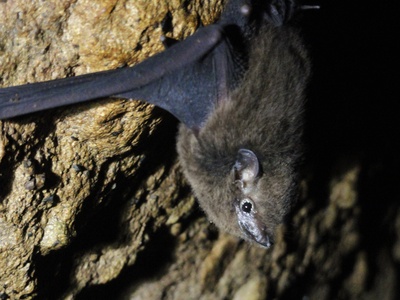
Fijian Free-tailed Bat
Nearly the entire known population roosts in a single cave, making it extremely vulnerable to disturbance, cyclones, and habitat degradation. This is Fiji’s only endemic mammal.

Fiji Ground Frog
This large, terrestrial frog is one of only two native frog species. It’s threatened by introduced mongooses, which prey on them, and extensive habitat destruction.

Fiji Banded Iguana
This beautiful iguana has vibrant green and blue bands. It faces threats from habitat loss, the pet trade, and predation by feral cats, rats, and mongooses.

Gau Iguana
Discovered as a distinct species in 2008, it is threatened by habitat degradation and invasive predators. Its name “bulabula” means “hello hello,” reflecting its vibrant colouration.

Long-legged Warbler
A secretive, ground-dwelling bird that is extremely difficult to see. Its small, fragmented population is at high risk from introduced predators like rats and mongooses.

Fijian Garden Snail
This large, colourful land snail is threatened by habitat destruction for agriculture and development. Predation by introduced rats and the carnivorous rosy wolf snail has also devastated its populations.

Bolo
Fiji’s only native venomous snake, the Bolo is a rarely seen, burrowing species. Its population is declining due to predation by mongooses and habitat conversion for agriculture.

Pink-billed Parrotfinch
This stocky finch is endemic to the largest island. It is rarely seen and threatened by deforestation for mahogany plantations and agriculture, which fragments its specific habitat needs.

Fiji Blossom Bat
A crucial pollinator, this bat roosts in large cave colonies that are highly sensitive to human disturbance. Its population is declining due to habitat loss and disturbance of roost sites.

Fiji Tree Frog
Fiji’s other native frog, this species lives in trees and lays its eggs on leaves. It is threatened by habitat degradation and the invasive cane toad.

Ogea Monarch
This small flycatcher is restricted to the tiny Ogea archipelago. Its entire population lives in a very small area, making it vulnerable to cyclones and invasive species.
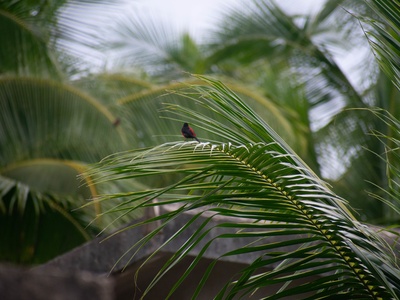
Rotuma Myzomela
Endemic to the single island of Rotuma, this small honeyeater has a tiny range. The population is susceptible to extreme weather events and any future introduction of predators.
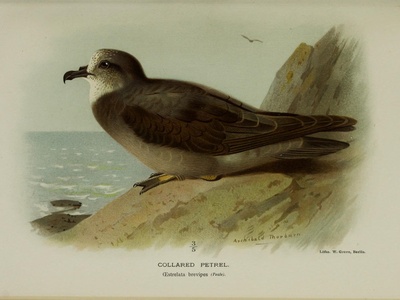
Collared Petrel
This seabird comes to land only to breed on remote, predator-free islands. Its nesting sites are highly vulnerable to introduced predators like cats and rats.

Friendly Ground Dove
A shy, terrestrial dove threatened by habitat destruction and introduced predators. It forages on the forest floor, making it extremely vulnerable to cats, rats, and mongooses.

Sperm Whale
While widespread globally, this deep-diving whale is listed as Vulnerable. It is rarely seen near shore but inhabits the deep channels between Fiji’s islands, facing threats from marine pollution.
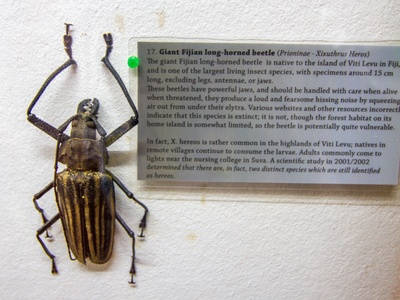
Fiji Giant Long-horned Beetle
One of the world’s largest beetles, this massive insect is endemic and highly prized by collectors. It is considered rare due to habitat loss and its naturally low population density.

Kadavu Fantail
While Near Threatened, its very restricted range on the Kadavu group makes it a notable rare endemic. It is vulnerable to habitat degradation and the arrival of invasive predators.
